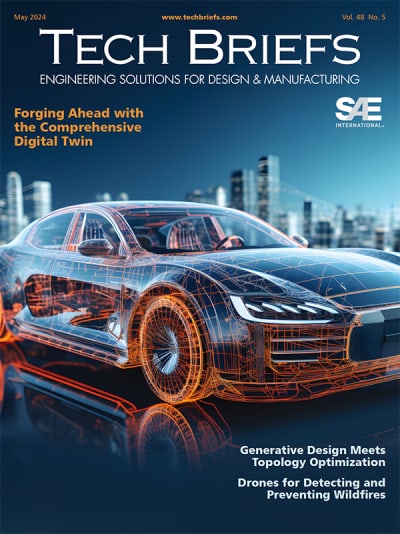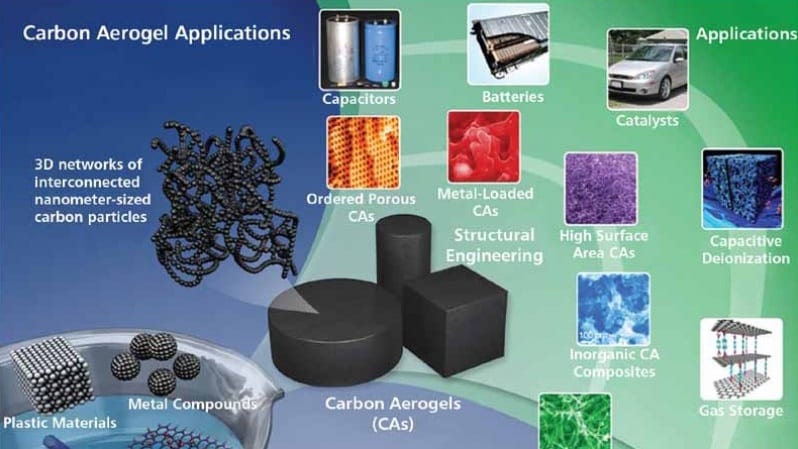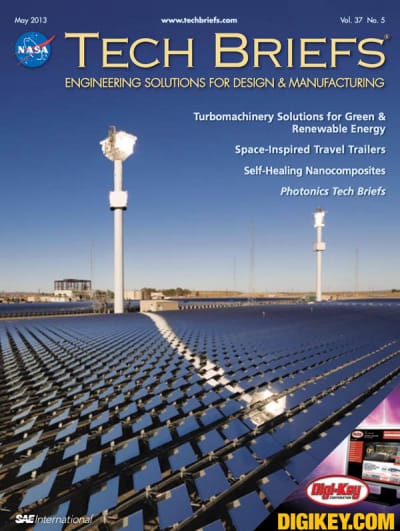Composite cryotanks, or composite overwrapped pressure vessels (COPVs), offer advantages over currently used aluminum- lithium cryotanks, particularly with respect to weight savings. Future NASA missions are expected to use COPVs in spaceflight propellant tanks to store fuels, oxidizers, and other liquids for launch and space exploration vehicles. However, reliability, reparability, and reusability of the COPVs are still being addressed, especially in cryogenic temperature applications; this has limited the adoption of COPVs in reusable vehicle designs.
The major problem with composites is the inherent brittleness of the epoxy matrix, which is prone to microcrack formation, either from exposure to cryogenic conditions or from impact from different sources. If not prevented, the microcracks increase gas permeation and leakage. Accordingly, materials innovations are needed to mitigate microcrack damage, and prevent damage in the first place, in composite cryotanks. The self-healing technology being developed is capable of healing the microcracks through the use of a novel engineered nanocomposite, where a uniquely designed nanoparticle additive is incorporated into the epoxy matrix. In particular, this results in an enhancement in the burst pressure after cryogenic cycling of the nanocomposite COPVs, relative to the control COPVs.
Incorporating a novel, self-healing, epoxy-based resin into the manufacture of COPVs allows repeatable self-healing of microcracks to be performed through the simple application of a low-temperature heat source. This permits COPVs to be reparable and reusable with a high degree of reliability, as microcracks will be remediated. The unique phase-separated morphology that was imparted during COPV manufacture allows for multiple self-healing cycles.
Unlike single-target approaches where one material property is often improved at the expense of another, robustness has been introduced to a COPV by a combination of a modified resin and nanoparticle additives. Unique nanoparticles were used that have been surface-functionalized to be compatible with the resin. Both organic and inorganic components toughen the matrix and result in a more impact-resistant COPV.
In one resin system containing an inorganic nanomaterial additive, a significant improvement in burst performance was observed after the COPV was cryo-impact-damaged and then selfhealed, with a greater than 10% improvement in burst pressure after the self-healing process was performed. Initial cross-sectional analysis via microscopy showed good resin infiltration of the carbon fibers and without voids. To further enhance the capability between the nanomaterial additives and the resin, a surface modification was successfully performed. A second specialty epoxy resin was prepared using a surface-modified nanomaterial additive, and COPVs were fabricated. Steps were taken to improve the mechanical properties of the COPVs by using a low-viscosity resin system that contained a different curing agent. This lower viscosity improves the processing of the COPV, and preliminary results show that the burst pressure of these new vessels is 20 to 25% higher than that of the original.
The self-healing concept demonstrated in this research and development effort represents a platform technology, and the self-healing property is neither restricted to the particular epoxy system used here, nor to the COPV application. Self-healing is a direct result of a unique phase separated morphology created via the resin and is aided by the nanoparticles. The self-healing function can be introduced to other customer-specific resin systems in coating, bulk, or composite applications provided that the unique phase separated morphology can be enabled in those systems.
This work was done by Daniel Eberly, Runqing Ou, Adam Karcz, and Ganesh Skandan of NEI Corporation for Marshall Space Flight Center. For more information, contact Sammy Nabors, MSFC Commercialization Assistance Lead, at






















